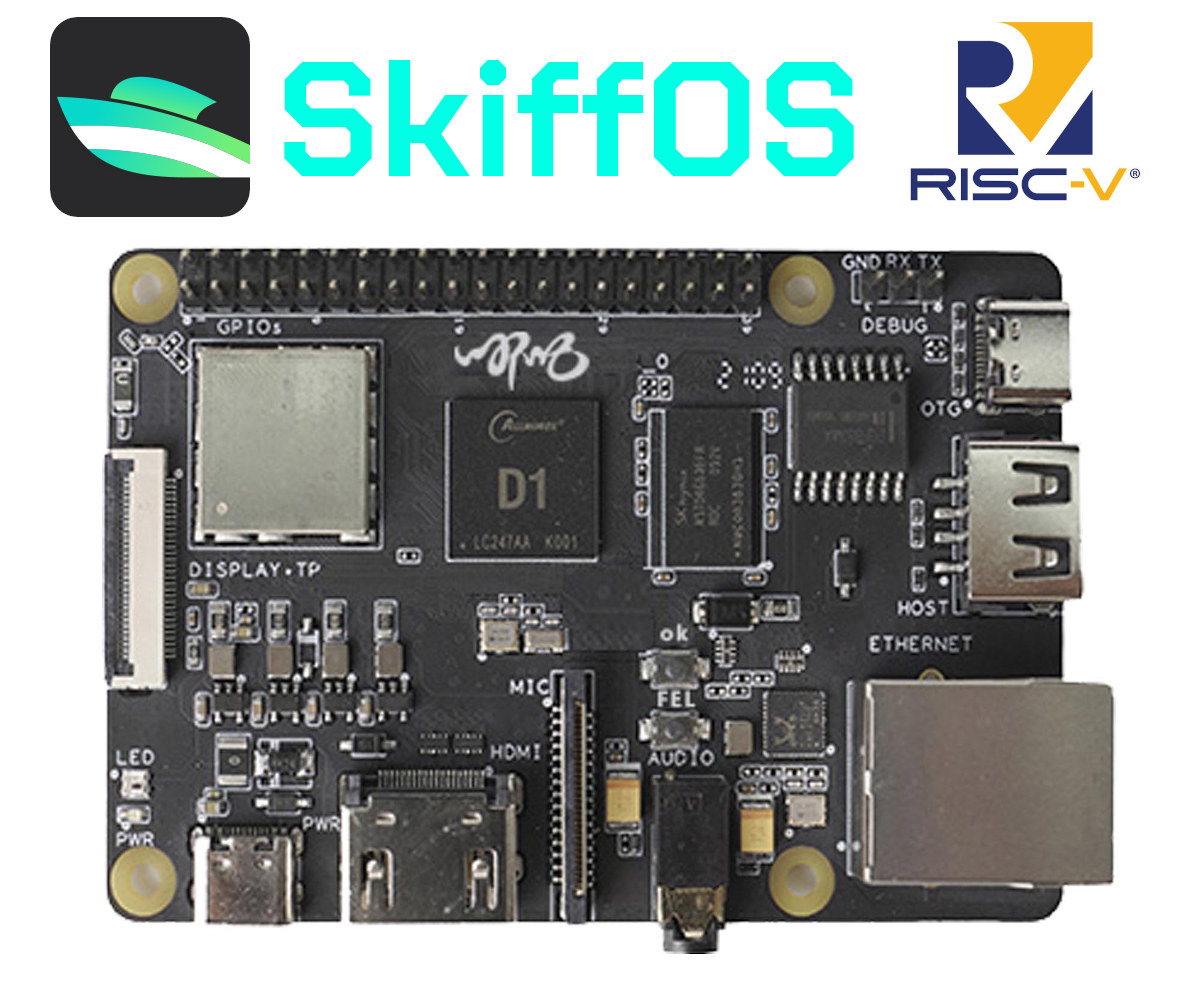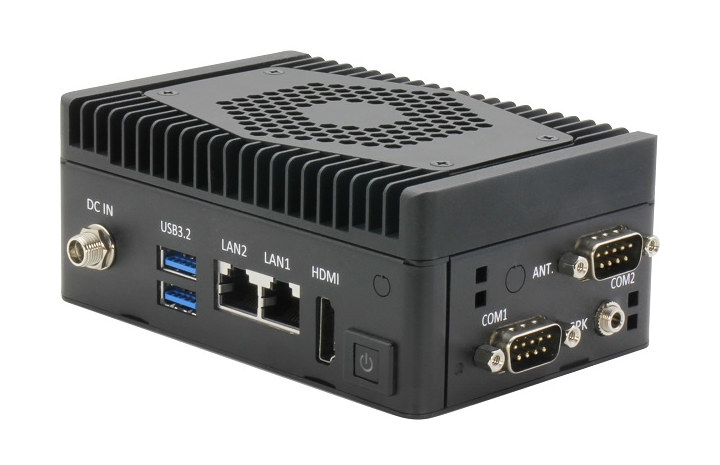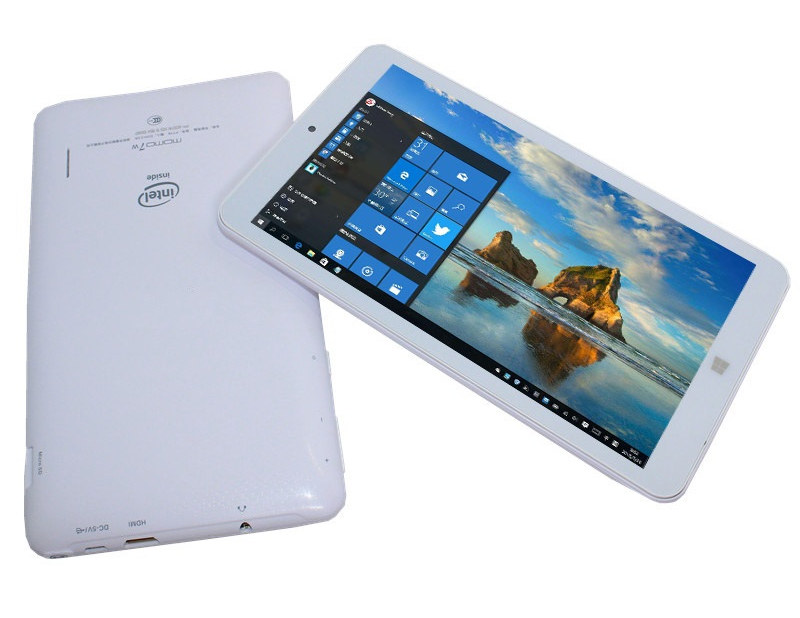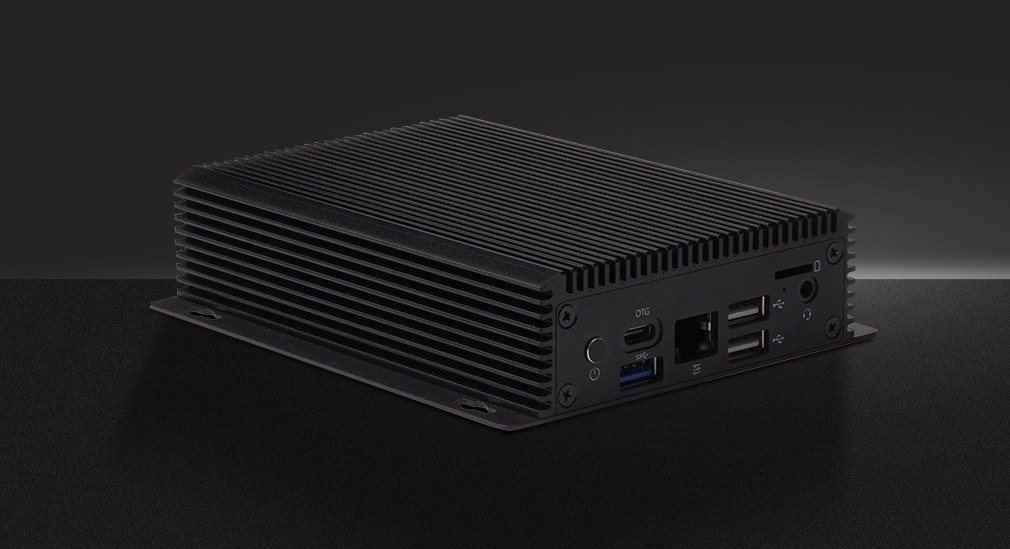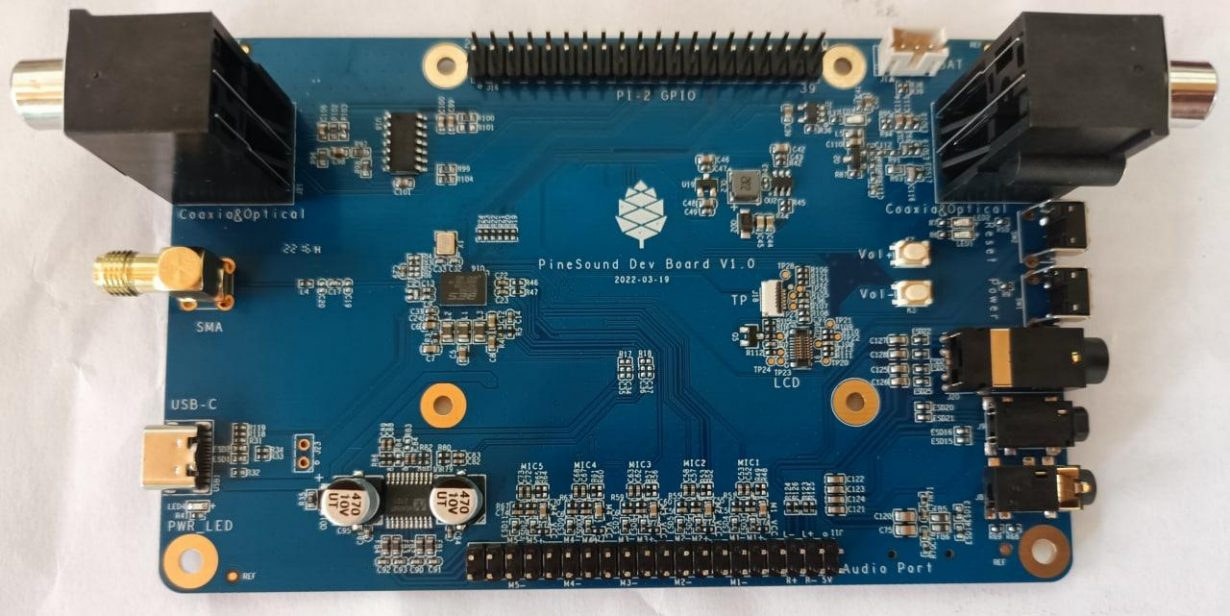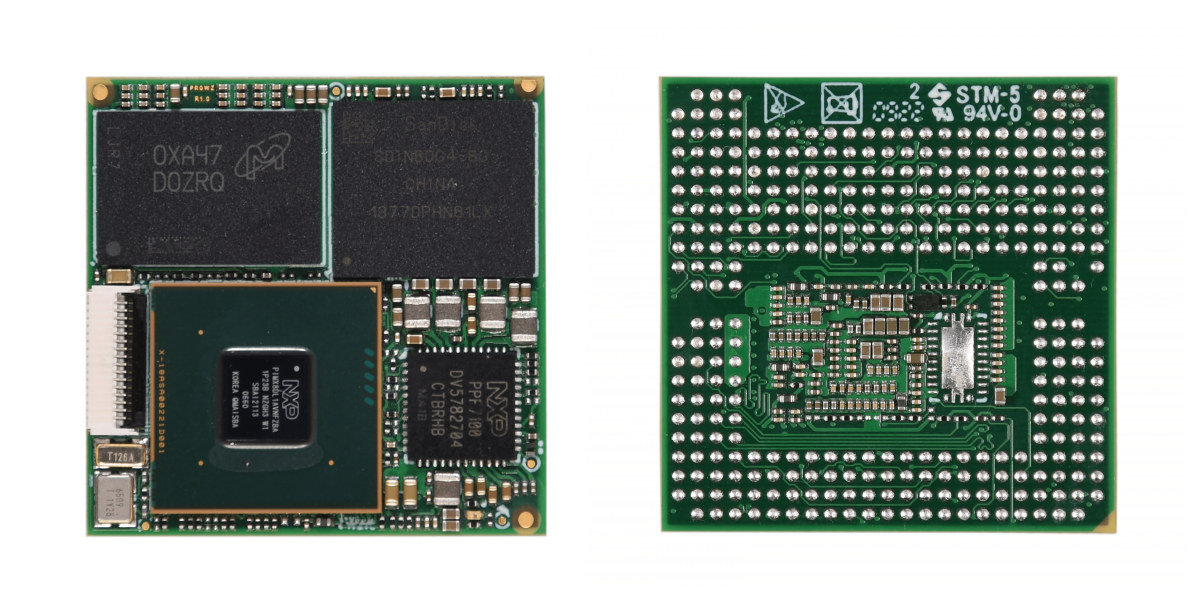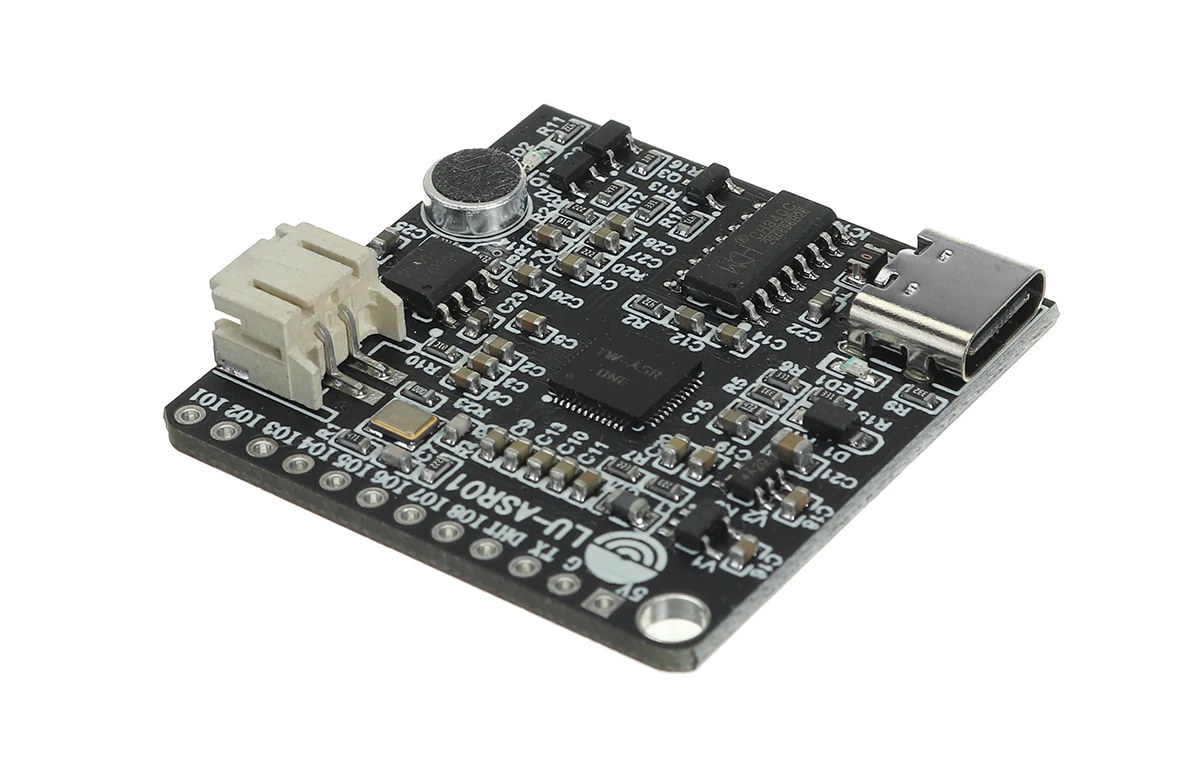SkiffOS minimal Cross-compiled Linux for embedded containers has just added support for Sipeed Nezha RISC-V single board computer, and work on the smaller Sipeed Lichee RV board has started. Wait… What is SkiffOS? I’ve never heard about it… That’s how the abstract from the white paper describes it: Embedded Linux processors are increasingly used for real-time computing tasks such as robotics and Internet of Things (IoT). These applications require robust and reproducible behavior from the host OS, commonly achieved through immutable firmware stored in read-only memory. SkiffOS addresses these requirements with a minimal cross-compiled GNU/Linux system optimized for hosting containerized distributions and applications, and a configuration layering system for the Buildroot embedded cross-compiler tool which automatically re-targets system configurations to any platform or device. This approach cleanly separates the hardware support from the applications. The host system and containers are independently upgraded and backed-up over-the-air (OTA). In other words, that’s […]
PICO-TGU4-SEMI is a Tiger Lake mini PC for robotics and industrial IoT applications
AAEON recently launched the PICO-TGU4-SEMI compact, rugged mini PC based on the company’s PICO-TGU4 Pico-ITX SBC powered by a choice of Intel Core i3/i5/i7 Tiger Lake UP3 processors, and designed for robotics and industrial IoT applications. The PICO-TGU4-SEMI embedded computer comes with up to 32GB RAM, SATA storage, support for SATA or NVMe SSD storage, HDMI output, 2.5GbE networking, two USB 3.2 ports, and more. PICO-TGU4-SEMI specifications: Tiger Lake SoC (one or the other) Intel Core i7-1185G7E quad-core/8-thread processor @ 1.8GHz / 4.4GHz (Turbo) with Intel Iris Xe graphics; 15W TDP Intel Core i5-1145G7E quad-core/8-thread processor @1.5GHz / to 4.1GHz (Turbo) with Intel Iris Xe graphics; 15W TDP Intel Core i3-1115G4E dual-core/4-thread processor @ 2.2GHz / 3.9GHz (Turbo) with Intel UHD graphics; 15W TDP Intel Celeron 6305E dual-core processor @ 1.8GHz with Intel UHD graphics; 15W TDP System Memory – Up to 32GB LPDDR4x 3200 MHz onboard memory with optional […]
FOMO (Faster Objects, More Objects) enables real-time object detection on low-end embedded systems
FOMO used to stand for “Fear Of Missing Out” in my corner of the Internet, but Edge Impulse’s FOMO is completely different, as the “Faster Object, More Objects” model is designed to lower the footprint and improve the performance of object detection on resource-constrained embedded systems. The company says FOMO is 30x faster than MobileNet SSD and works on systems with less than 200K of RAM available. Edge Impulse explains the FOMO model provides a variant between basic image classification (e.g. is there a face in the image?) and more complex object detection (how many faces are in the image, if any, and where and what size are they?). That’s basically a simplified version of object detection where we’ll know the position of the objects in the image, but not their sizes. So instead of seeing the usual bounding box while the model is running, the face position will be […]
7-inch tablet with Intel Atom Z3735G processor sells for $55
Hardware platforms based on Atom Z3735G or Z3735F Bay Trail processors were all the rage in 2014-2016, as the processors were found in tablets, mini PCs, and single board computers sold at price points that provided alternatives to Arm platforms that may not be as well supported. But time has passed and those processors are really slow by today’s standard, so I was surprised to find out some companies were still selling products based on Bay Trail processors with the “MOMO7W” 7-inch tablet powered by an Intel Atom Z3735G quad-core processor, coupled with 1GB RAM and 16GB flash. MOMO7W tablet specifications: SoC – Intel Atom Z3735G quad-core Bay Trail processor @ up to 1.33 GHz / 1.83 GHz (Turbo) with Intel HD graphics; 2.2W SDP. Note: it’s indeed discontinued. Storage – 1GB SDRAM Storage – 16 GB eMMC flash, MicroSD card slot up to 32GB Display – 7-inch capacitive touch […]
EC-R3568PC is a compact rugged mini PC based on Rockchip RK3568 SoC
Firefly EC-R3568PC is a compact rugged mini PC powered by Rockchip RK3568 SoC with a built-in 1 TOPS AI accelerator, up to 8GB RAM, 128GB flash, M.2 NVMe and SATA 3.0 storage, dual Gigabit Ethernet, HDMI 2.0 output, RS232 and RS485 interfaces through an RJ45 socket, and more. The fanless embedded computer is designed to be wall-mounted, and operates in a wide -20°C – 60°C temperature range making it suitable for smart NVR, cloud terminal, IoT gateway, and industrial control applications. EC-R3568PC specifications: SoC – Rockchip RK3568 quad-core Cortex-A55 processor @ up to 2.0GHz with Arm Mali-G52 2EE GPU with support for OpenGL ES 1.1/2.0/3.2, OpenCL 2.0, Vulkan 1.1. 1 TOPS NPU, VPU with 4Kp60 H.265/H.264/VP9 video decoding, 1080p60 H.265/H.264 video encoding System Memory – 2GB, 4GB, or 8GB LPDDR4 Storage 16GB, 32GB, 64GB, or 128GB eMMC flash 16MB SPI Flash M.2 PCIe 3.0 socket for 2242 / 2280 NVMe […]
PineSound is a development board for earbuds and digital audio players
You may have read Pine64’s April’s Fools spoof about the PineBuds and PinePod earlier this month. It turns out those will be real, and the Pine64 PineSound development board will be used to bring the PineBuds earbuds and PinePod digital audio player to market. The PineSound board features Bestechnic BES2300 Bluetooth 5.0 audio chip, two coaxial & optical input and output, a 3.5mm headphone jack, 4.4mm and 2.5mm balanced jacks, an SMA connector, a USB Type-C connector, plus interfaces for a touchscreen display. PineSound preliminary specifications: WiSoC – Bestechnic BES2300-YP dual-core Arm Cortex-M4F @ up to 300 MHz with HW DSP instruction, 992KB SRAM, 4MB flash, Bluetooth 5.0 dual mode. Supports hybrid ANC (active noise cancellation) and TWS (true wireless stereo). Note: the datasheet has been made available in the comments section. Display – LCD (should be SPI) and touch panel connectors Audio Coaxial & optical input (left) Coaxial & […]
OSM Size-S compliant LGA system-on-module is powered by NXP i.MX 8XLite processor
iWave Systems has launched another system-on-module compliant with the SGET OSM (Open Standard Module) standard with the iW-RainboW-G46M powered by NXP i.MX 8XLite Cortex-A35 processor designed for V2X and IIoT applications and following OSM Size-S (30x30mm) form factor The new system-on-module follows the iW-RainboW-G40M module with NXP i.MX 8M Plus processor and OSM Size-L (45x45mm) form factor launched at the beginning of the year. The iW-RainboW-G46M comes with 2GB RAM and 8GB flash by default, Gigabit Ethernet, PCIe, and CAN interfaces among others, and can operate in a wide -40°C to +125°C temperature range. iW-RainboW-G46M specifications: SoC – NXP i.MX 8XLite Dual/Solo Cortex-A35 processor @ up to 1.2 GHz with Cortex-M4F real-time core, on-chip V2X accelerator (but no GPU, no VPU) System Memory – 2GB LPDDR4 (expandable) Storage – 8GB eMMC Flash (expandable) 332 balls contact grid with Display – 18-bit RGB LCD interface Audio – 1x I2S Networking – […]
$8 LU-ASR01 offline speech recognition board features “TW-ASR ONE” chip
LU-ASR01 is a board capable of offline speech recognition with a built-in microphone, a speaker connector, twelve through holes for GPIOs and a temperature sensor interface for DHT11/DS18B20, plus a USB Type-C port for power and programming. At first, I thought it might be based on the Unisound US516P6 microcontroller which we’ve seen on some inexpensive offline speech recognition modules, but the chip looks completely different, with the marking TW-ASR ONE. So let’s investigate… LU-ASR01 board specifications took some effort, but here’s what I’ve managed: MCU – TW-ASR ONE (aka TWen ASR ONE) microcontroller with 4MB flash, 512KB RAM, and a BNPU for voice processing; package: QFN48L (6x6x0.85mm) Audio I/O Built-in microphone 2-pin speaker header plus 3W power amplifier for 4Ω/3W speaker Voice recognition Up to 10 meters wake-up range 98% ultra-high recognition rate Customizable to 5 wake-up words and 200 recognition words USB – 1x USB Type-C port for […]


